NOMAD MICROCAMPS
ST. PETERSBURG, FL
WE-Making is a suite of resources that explores the relationship between place-based arts practices and social cohesion as a means to advance health equity and community wellbeing. This We-Making story is one example of how place-based arts and cultural strategies uniquely contributed to social cohesion and wellbeing in this community. Throughout this story you’ll see terms paired with actions in parentheses (e.g., social capital, collective action, place attachment, civic engagement, self-determination of shared values). This is to denote for the reader how the WE-Making framework was specifically incorporated. Explore the WE-Making framework and resources.
The sun shines at the Westminster Community Playground, located in the Westminster Heights neighborhood in South St. Petersburg, Florida. Kinsey and Angie, two artists from the neighborhood, begin setting up for their weekly NOMAD MicroCamp. Kinsey, an art therapist, has been facilitating this camp since the COVID-19 pandemic began, due to the halt to most opportunities for children’s enrichment and community engagement. NOMAD recognized the gap, and began providing neighborhood artists like Kinsey with the resources to host these free, weekly, pop-up art programs. Observing CDC recommended COVID-19 safety guidelines, NOMAD artists facilitate creative, socially-distant, two-hour engagements with children in their own neighborhoods. The four camp locations, including Westminster Heights, were chosen to maximize access and focus attention in communities experiencing racism and oppression.
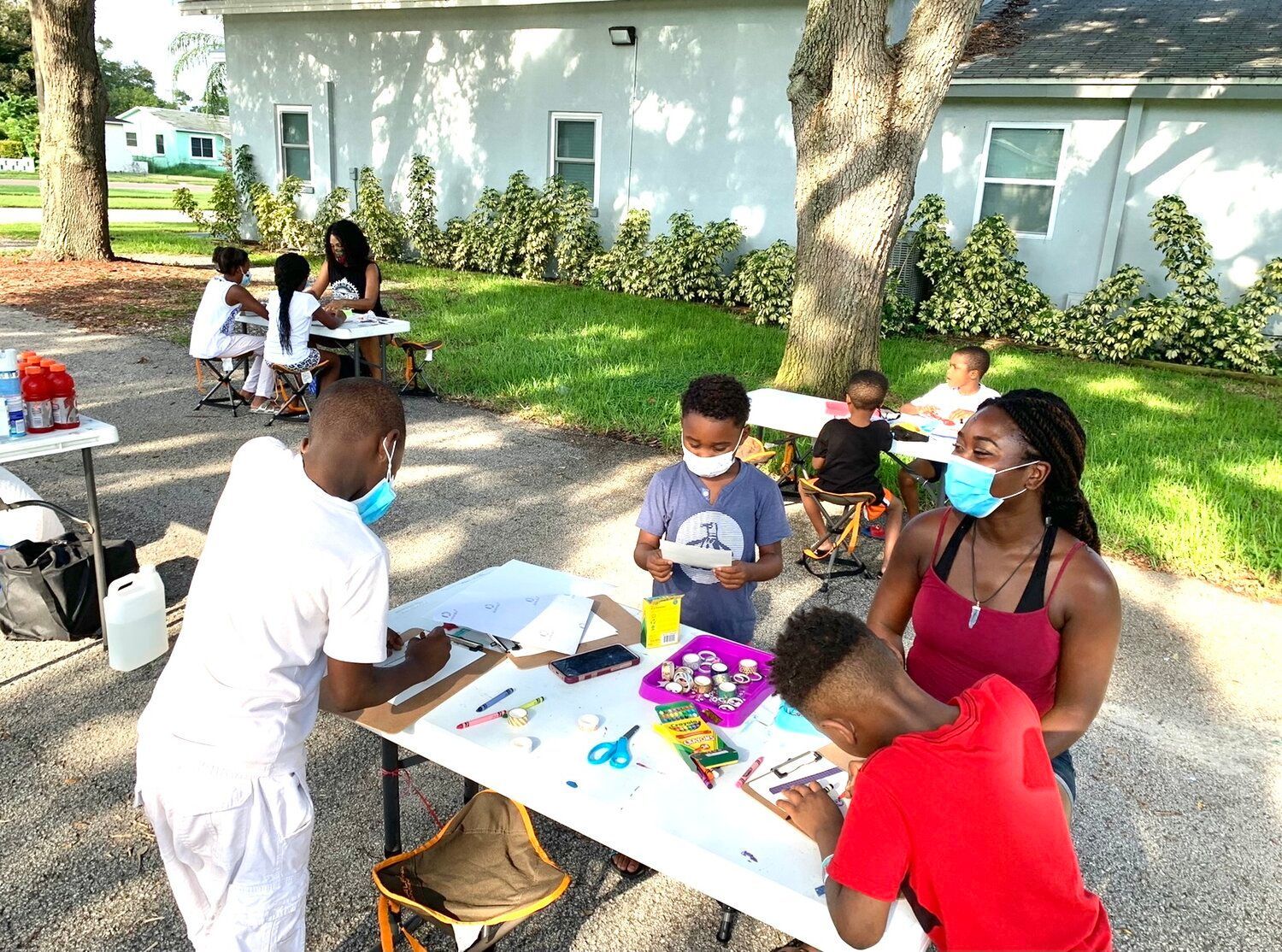
Neighborhood children begin to arrive by bike, skateboard, and on foot—some accompanied by caregivers, most arriving independently with their friends or siblings. They converge and begin to settle into seats at four folding tables that have been set up at the playground. There is a chorus of laughter and conversation as neighbors greet each other—some catching up with old friends, others meeting for the first time.
At one table, three siblings sit together. They live a few blocks away and have been attending this camp from the start. Their family is well-established in the neighborhood and they show up like clockwork each week. At another table are five siblings who are relatively new to the neighborhood. They moved into a home across the street from the park where their single mother cares for them and several extended family members. As many as ten children at a time from her home attend MicroCamp. They have missed only four sessions in six months. She recently expressed what a blessing the program has been for her and her family. It has created a safe and supportive space in their neighborhood, helping her kids navigate relationships within and beyond their family, and encouraging creative expression and participation in the community (place attachment- creating rewarding experiences within community places). Her children have developed a sense of belonging in their new neighborhood. It has also helped her to tap into the existing network of mutual aid in Westminster Heights.
As is true with both of these households, a large percentage of residents in Westminster Heights are people of color and many experience high levels of poverty. Many homes in the neighborhood are occupied by families with multiple children, but the area scores low on the Child Opportunity Index. Though the demographics of the neighborhood evidence a need for resources and support, Westminster Heights is located just outside of the South St. Petersburg Community Redevelopment Area. These equity challenges significantly limit opportunities for families in the neighborhood, and the pandemic only exacerbates these inequities. NOMAD organized the MicroCamp initiative as a place-based arts strategy in response to these challenges (creative responses to trauma and racism- rebuilding social cohesion through countering the effects of collective trauma and racism).
Founded in 2013 with a mission of “art for ALL,” NOMADstudio—the Neighborhood Oriented Mobile Art + Design Studio—is a nonprofit that has facilitated tens of thousands of place-based arts interactions, engaging people in acts of creative expression in neighborhoods, regional juvenile detention centers, group children’s homes, and other spaces where there is often little or no access to arts programming. NOMAD puts creativity into motion to fuel connections and nurture communities by mobilizing artists, activating shared spaces, and celebrating creative expression as an essential part of human well-being (civic engagement- initiating more hyper-local civic engagement with a lower bar to entry).
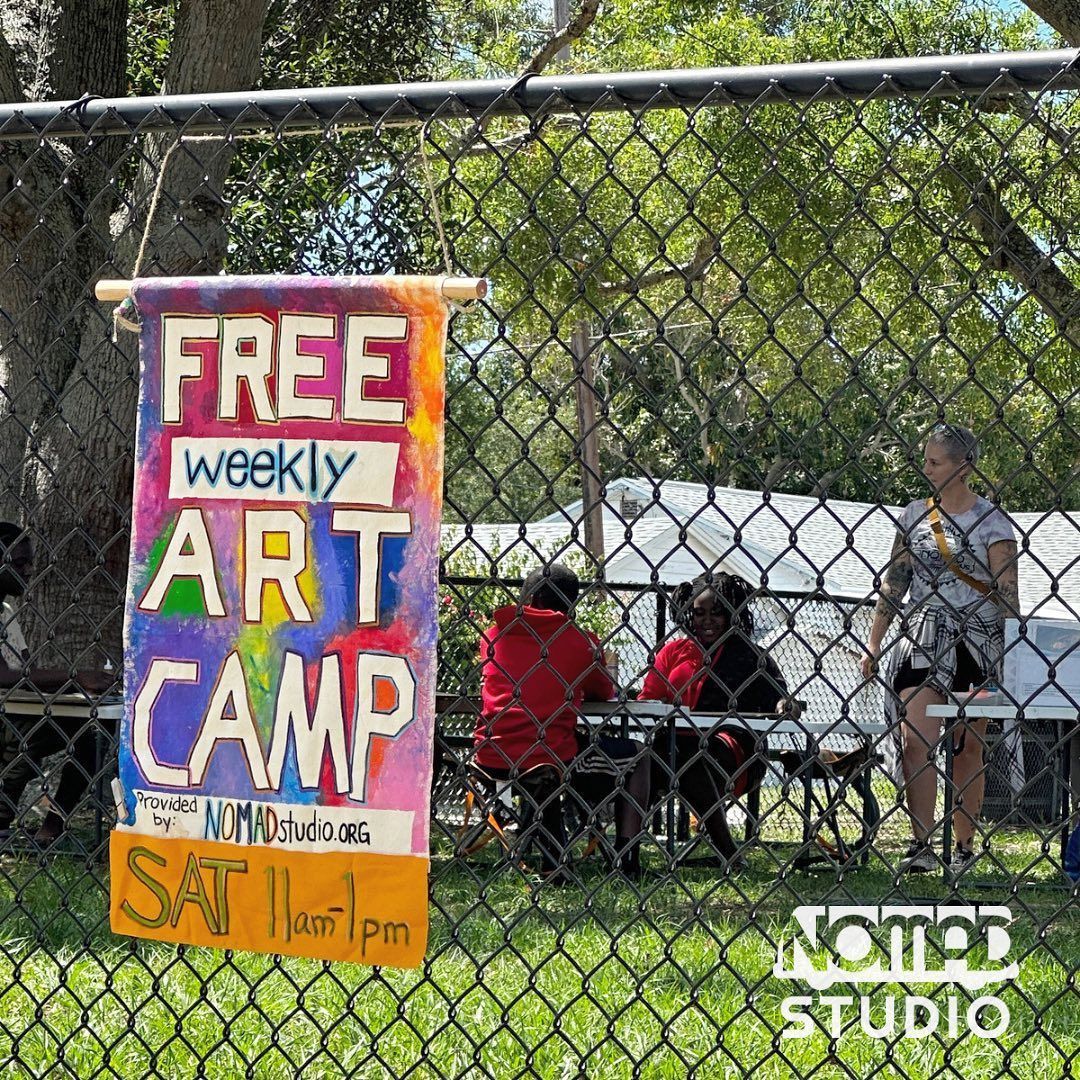
How arts and culture moved the dial in Westminster Heights...
Residents in Westminster Heights, including the NOMAD artists, have a shared understanding of the systemic racism and structural inequities that impact their neighborhood, where 20-30% of the population lives below poverty level and 30-50% of residents are people of color. This shared understanding often takes form in the expression of negative opinions from both children and adults about their neighborhood —many describe it as “the hood” and express a desire to move “out and up” to “someplace better.” The NOMAD artists living there acknowledge that their neighborhood is a community experiencing racism and oppression, and their work is rooted in the hope that Westminster Heights can be that “someplace better” (mindset- orientation toward the common good).
Placed-based arts and cultural strategies…
NOMAD MicroCamps builds and shares power starting within the community. Like Westminster Heights, every MicroCamp has at least one artist facilitator who lives in that neighborhood. All children who attend Westminster MicroCamp live within blocks of the facilitators, and they help to drive decision making at camp (civic engagement- building and sharing power through community ownership, prioritizing co-creating). One of the artists established a community garden in their yard soon after the project began, which eventually became a second site for the MicroCamps (place attachment). That camp now alternates between these neighborhood anchor spaces each week. In addition to feeling ownership of the camps, children and families now also feel ownership of the garden, helping to tend the plants and choose what is grown each season.
...amplify the drivers of social cohesion…
NOMAD MicroCamps also connect people across differences by including all types of community members and maintaining a consistent presence in the community. The weekly MicroCamps, and now the community garden in Westminster Heights, have become neutral community spaces where children practice sharing space (even when they’re finding it difficult to get along) and households meet and get to know each other. Participants help to make decisions about camp agreements, where camp will take place, and what projects they will do. Stakeholders, whose children may or may not participate directly, donate supplies and materials, provide feedback, and are pleased that the children have this accessible opportunity for engagement.
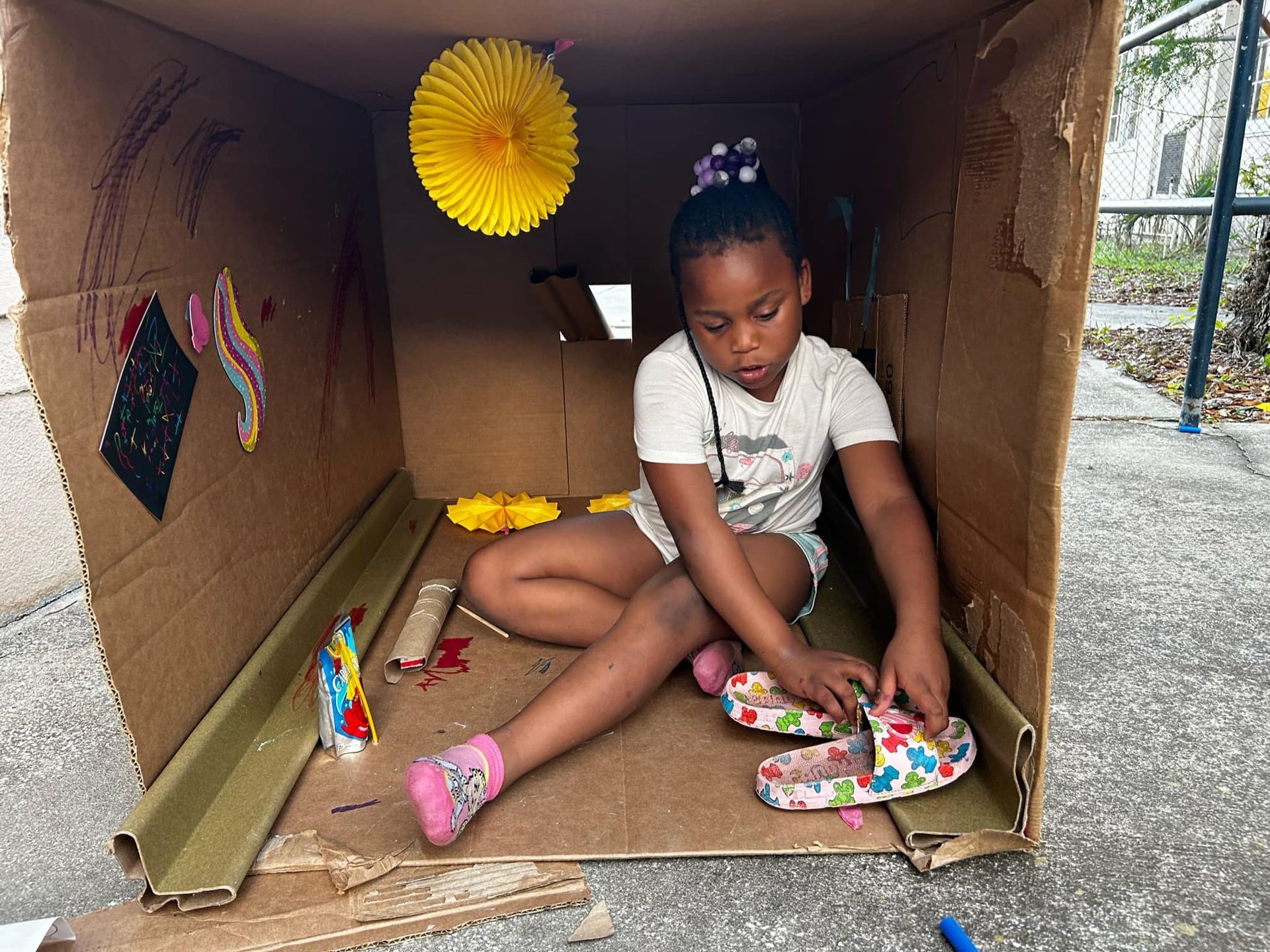
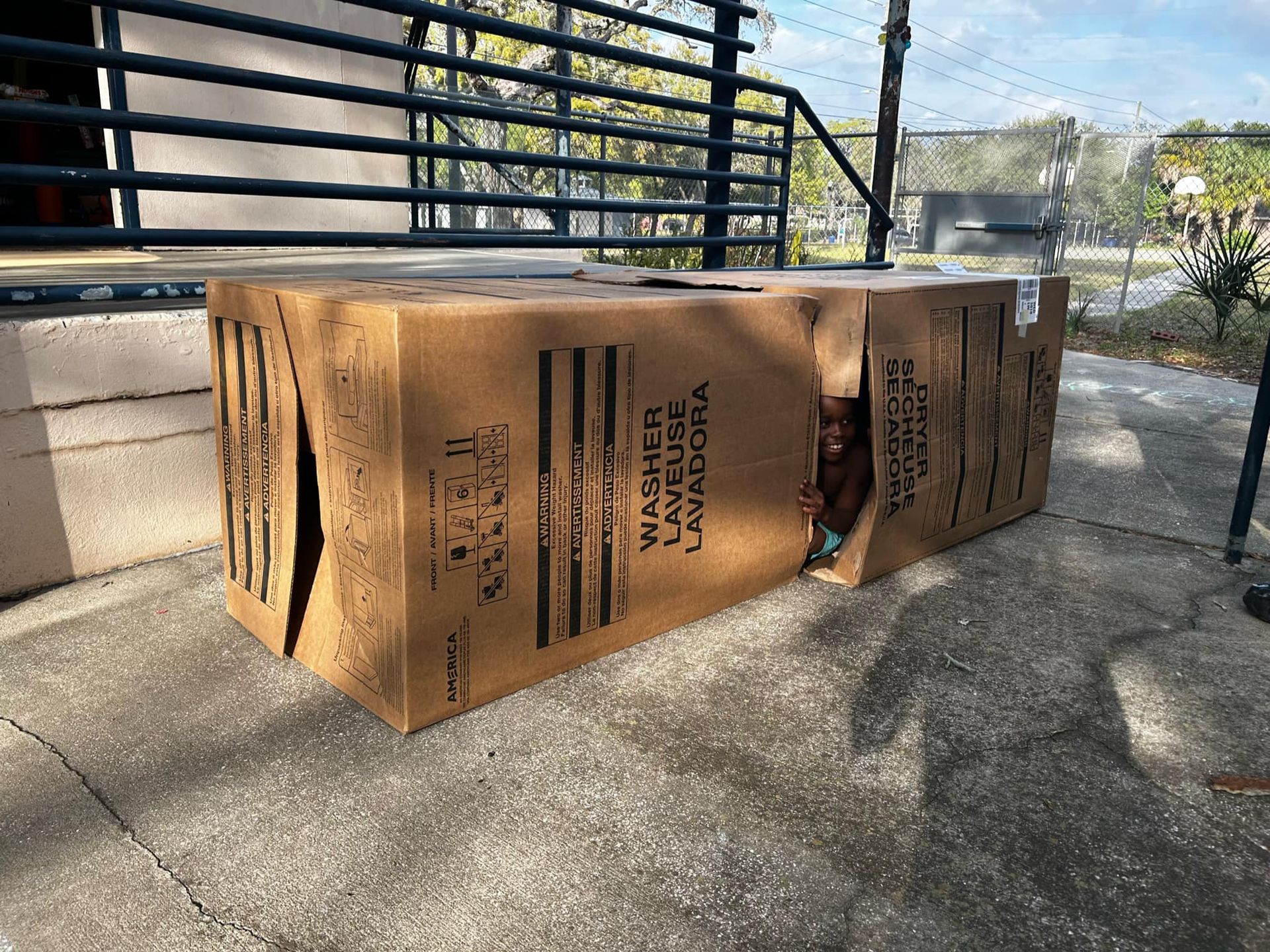
NOMAD MicroCamps cultivate social cohesion by amplifying place attachment and social capital. MicroCamps demonstrate that residents can shape how they feel about their neighborhood by creating safe spaces where a sense of belonging can develop, and they encourage connections between neighbors by bringing them together for weekly creative engagements (social capital). No registration is required and there is no cost to participate, so the barrier to entry is low and the willingness to participate encouraged. At the same time, there are clear and consistent boundaries set for participation—most importantly, the basic expectation of no harm done during camp. In this way, MicroCamps amplify civic engagement, orienting participants toward the common good. This orientation amplifies a shared mindset, cultivating thoughts, beliefs, and expectations that allow for MicroCamp to continue as a consistent, safe, creative space in the community.
Though community change goals are still being identified and developed, MicroCamps align with a theme that is common among all residents—a safer neighborhood with increased equitable community well being (civic capacity for structural change).
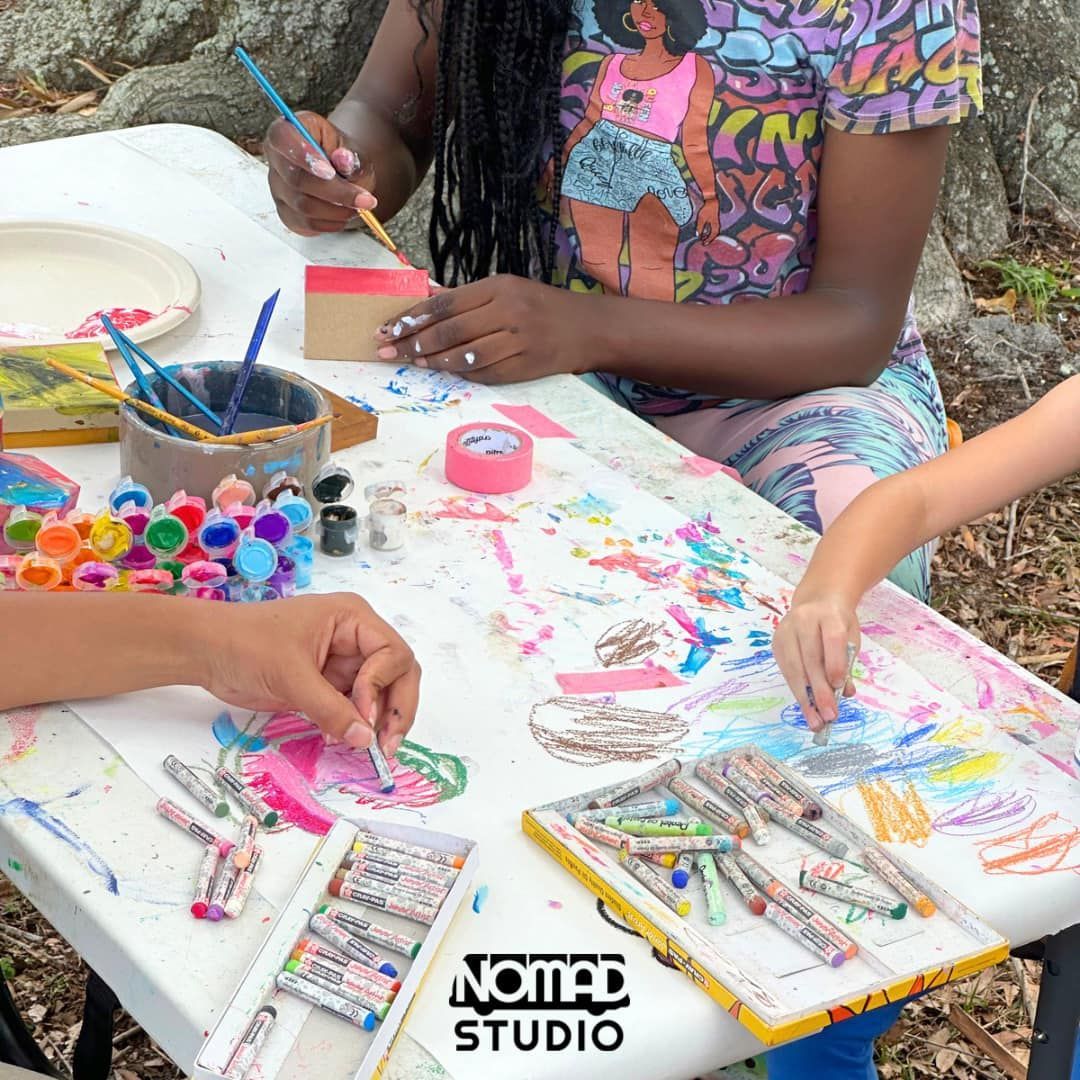
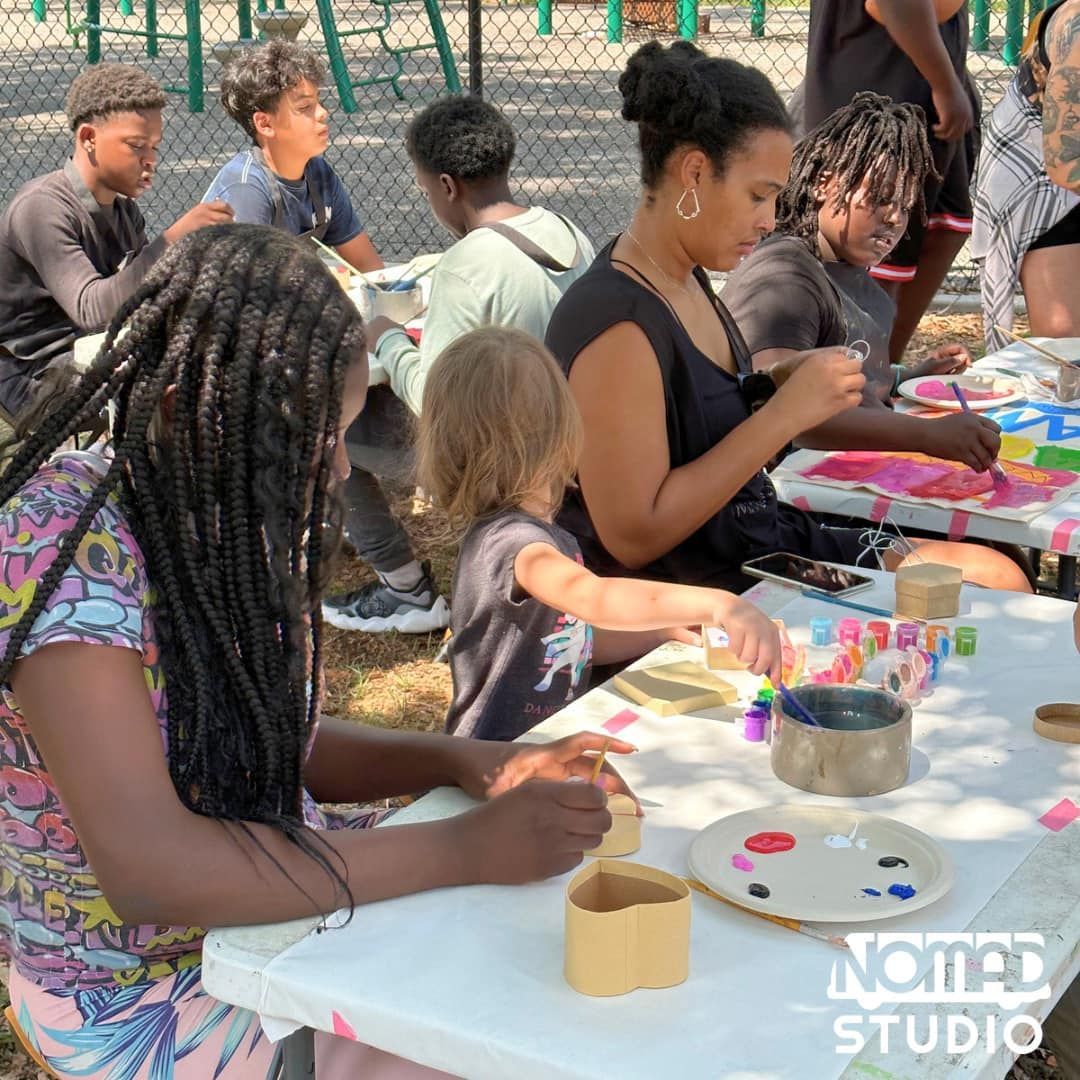
Though the MicroCamp initiative was originally imagined to be a temporary COVID recovery project that would conclude in 2020, the demand for safe, accessible, neighborhood-based enrichment activities continued as the pandemic persisted. Families began to communicate the positive impacts of the initiative and children began sharing more with the NOMAD artists, providing a more holistic understanding of their needs.
Organically, the NOMAD MicroCamps evolved into hubs of community care, nurturing healthy relationships and holding space for children to tap into their joy and speak openly about their needs. This has resulted in youth-driven collective efficacy. NOMAD responded to needs identified by the children, putting calls out to a network of supporters and partners and inviting the community to help address issues like food insecurity and the achievement gap that grew during the pandemic.
In addition to calling for help to address hunger and literacy, the children in Westminster Heights have turned to the NOMAD artists when they need to feel safer in their neighborhood, which has a history of physical altercations between youth. In the past some incidents have even resulted in the police being called. When they invited NOMAD artists to mediate, it resulted in youth reflecting on safer choices about how they handle conflict. Children have also let facilitators know about adults and older youth in the neighborhood saying racist or other harmful things to them. They didn’t feel comfortable sharing some of these things with their parent(s) fearing that their parent(s) might get angry and confront the harm-doer, possibly resulting in arrest, injury or death. The trust built over time allowed the neighborhood children to discuss the situations with a caring adult, one who could work to help them process those interactions in a healthy way (mental and physical health).
The Westminster MicroCamp has now been convening weekly for 72 weeks, reaching 58 children from 26 households. This has culminated in 58 neighborhood children having 566 interactions with art over 144 hours of programming in their own neighborhood.
While broader markers of increased community well-being are still unfolding through the NOMAD MicroCamp initiative and stories of mid- to long-term outcomes are still taking shape, there is qualitative evidence of growth in social cohesion in Westminster Heights as a result of the neighborhood MicroCamp. Recognizing this opportunity to provide a networked structure for broader ongoing community care, NOMADstudio has decided to integrate MicroCamps as a permanent part of their existing Neighborhood Outreach program.



